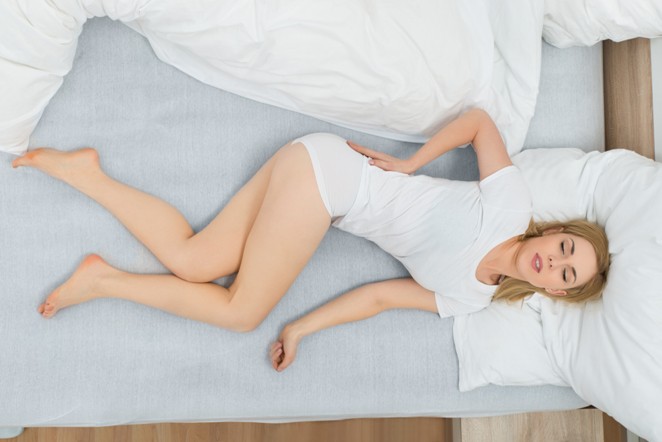When your back hurts, everything else does, including walking, sitting, lifting, but sleep has a regenerative impact on the body that alleviates the pain, and numerous factors actually relieve you of back pain when you sleep. Choosing the right mattress is one of the ways to make your back happy again, as it is also important that you know the right sleeping positions and how to routinely change positions in order to avoid and assuage back pains.
Mattresses with proven back pain relief
Product Durability Sleep Quality Pain Relief Price now Editor choice 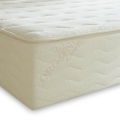
PlushBeds Botanical Bliss Organic Latex Mattress $2,799.00
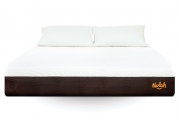
Nolah Mattress Best price 
Eco Terra 11” Luxury Latex Mattress 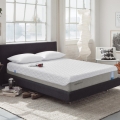
Tempur-Pedic TEMPUR-Cloud Prima 10″ Mattress 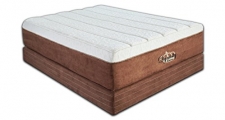
Dynasty Mattress NEW Luxury Grand Best value 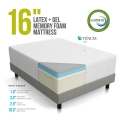
LUCID 16 Inch Plush Memory Foam and Latex Mattress 
Quatro Sleep Mattress – Discontinued
Tip on getting the best mattress for back pain
Morning Back Pain and Nighttime Back Pain Causes
There are three main types of back pain you are dealing with, and these have varied effects and pain level which could be triggered due to the wrong bed or sleeping position. Morning and nighttime back pains are quite common with people especially those that are struggling with spinal and nerve pains which are the most intense type due to the pressure that affects the spinal column or from a diagnosed disc problem or nerve injury. The pains you would feel every morning or night could get worse or alleviated, depending on essential factors such as the mattress you sleep on and how it handles your sleeping position.
Morning back pain has numerous causes and types mainly inflammatory back pain, myofascial pain syndrome or fibromyalgia, and awkward sleeping postures. Out of all these types, inflammatory back pain is considered the scariest and most common one.
Nighttime back pain, on the other hand, is specifically the type that affects the lower back and could be an indicator of a more serious spinal problem, and while the pain is debilitating, it could also be manageable with proper exercise, rest, and the right mattress to sleep on. Nocturnal back pain hurts the most especially with a lying down position and could get worse with the wrong surface that supports the back; thus adjustments should be made not only on how you sleep but also on the mattress you use.
back to menu ↑Sleeping Position and Back Pains
A spine specialist of the Richard E. Jacobs Medical Center and Cleveland Clinic in Ohio, Dr. Santhosh Thomas, said that no sleep position is considered a one-size-fits-all solution for back pain, but there are sleeping positions that could alleviate the discomfort when done the right way.
Protecting your back with the right sleeping position is entirely possible, but these positions could also aggravate the problem thus it is imperative that you know the right ways to do it. For instance, sleeping on your stomach or abdomen could be a harsh and awkward position that increases back pain as the spine could usually stay unsupported, and the back tends to cave in. This position puts enormous pressure on the muscles and joints as well as the pelvis and lower abdomen and when you put pillows under your head, pelvis, and lower abdomen, it could cause strain on the back.
A lot of people usually sleep on their side, and this position could result in hip and back pain due to the position of the top leg when it slides forward and causes rotation of the lower part of the spine. There is more spine rotation for side sleepers especially when the position of the top shoulder droops forward, but the right position could actually protect the back and spine especially when you use a thicker pillow to support your head or the right mattress with the appropriate firmness level, avoiding pressure on the neck.
One of the best positions that could keep back pain and discomforts at bay is to sleep on your back, however, without the right mattress that supports and cradles the body, this position may also cause lower back pain. Other regions of the body that could be affected when sleeping on your back include the pelvic area, shoulders, hips, and neck.
back to menu ↑Which Mattress Type Works Best for Back Pain
Mattresses are not created equal especially when it comes to providing comfort and relief from back pain and other related pressure points such as the neck, hips, and shoulders. The right mattress offers three essential things; mattress support, firmness, and conforming ability, all these make sure that you get the right protection to avoid back pains and even provide relief and alleviation of those pains.
Actual owner experiences with different mattress types show that airbeds cause fewer problems such as barring mechanism breakdown or loss of support and sagging, making the mattress suit different sleep positions and personal preferences to prevent and relieve back pains. Memory foam mattresses do have sagging, support loss, and excessive softness issues which could significantly affect the back and other pressure points, however, the satisfactory conforming abilities of the mattress make it a good option for average-sized to overweight individuals but not that amenable to smaller-sized people.
Latex mattresses have the tendency to develop body impressions and indentations and could potentially soften when exposed to weight and pressure. However, the mattress moderately conforms to the shape and contour of the body, offering excellent support to prevent widespread pain problems. Hybrid mattresses containing memory foam and innerspring materials have above-average scores for back support and good conforming abilities as long as 2” memory foam is integrated into the construction. Waterbeds, innerspring, and futon mattresses usually have fair to good, but some models have questionable back support, conforming ability, and firmness options which could be dangerous for the back and other pressure points.
back to menu ↑Firmness Level
The right firmness has everything to do with the prevention and alleviation of back pain, and different mattress types have their level of firmness that is offered on the table. Medium firmness could vary from medium-soft to medium-firm, and this scale strikes a balance between enough firmness and enough softness to deliver both support and comfort to the body. The medium-range firmness level is ideal for average to lightweight individuals, but large-sized people may find it lacking adequate back support particularly if you sleep on your stomach and side.
Firm mattresses offer support, but the downside of this mattress firmness level is that it does not provide the right conforming ability for small and average-sized individuals but an ideal option for heavyweight people with more than 230 lbs weight. Excessively firm mattresses are quite uncomfortable for some people especially for side sleepers who could apparently feel the pressure points on a harder sleep surface.
The soft mattress has the conforming ability and sufficient support for the back, but it could be highly recommended for smaller-sized individuals only, preferably those who weigh less than 120 lbs. Average to large-sized users could feel the lack of adequate back support particularly with excessively plush mattresses, and this could be worse for stomach or side sleepers.
back to menu ↑Mattress Conforming Ability
The conforming ability of a mattress is how the mattress fairs in conforming or molding to the curves and contours of the individual’s unique body shape. A good conforming ability of a mattress equally supports the body in different parts and regions while minimal to no conforming ability would mean some gaps or portions are not supported, resulting in the localization of body pains such as on the lower back. Unequal support puts more pressure on an isolated part or parts of the body, putting significant discomforts on that area and a mattress’ low conforming ability affects specific parts of the body particularly the hips and shoulders for side sleepers.
back to menu ↑Pay Extra Attention to Durability
Durability is one of the most important factors to look into when looking for a mattress that is ideal for back pain relief as non-durable and non-resilient mattresses tend to sag which could significantly cause back pain. Affordable or cheaper beds have questionable durability thus it is not advisable to go for these mattress types especially if you have chronic or severe back problems such as sciatica, fibromyalgia, and other serious back issues.
back to menu ↑Give Time to Evaluate Your Purchase
Different mattress manufacturers provide trial periods so that you can evaluate the mattress and see if it is your perfect match or otherwise. It takes time to warm up to the mattress, and you would need to be patient to make a sound and reasonable conclusion, preferably 10 days or longer to reach the right verdict.
back to menu ↑Reasonable Budget for a Mattress for Back Pain Relief
Mid-range to high-end mattresses usually have the features and construction that score higher in the conforming ability, support, and firmness level, making them ideal for back pain relief. Cheaper mattresses are prone to sagging that could decrease back support and protection, resulting in morning and nighttime back pains and discomforts.
back to menu ↑Can Mattress Toppers be a Solution for Back Pain?
Most mattress toppers are designed to provide a soft and springy cushion and not back support and pressure point protection, however, there are types of toppers that are created with good conforming ability and support. It is best to know the materials from which the mattress topper is made of before getting one for back pain relief.
Numerous variables affect your back, whether in a positive or negative way but there are also practical and proven solutions to put an end to this such as knowing the best mattress types that offer back support and pressure relief.

